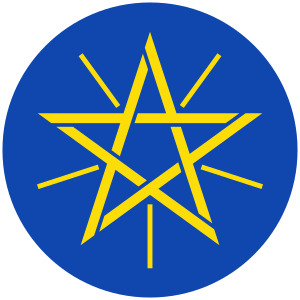1987 Ethiopian general election
General elections were held in Ethiopia on 14 June 1987 for seats in its Shengo. This was the first election since Emperor Haile Selassie was deposed in the Ethiopian Revolution as well as the first–and as it turned out, only–election under the 1987 constitution, which replaced the Derg regime with the People's Democratic Republic of Ethiopia (PDRE).
 |
|---|
| This article is part of a series on the politics and government of Ethiopia |
|
|
Judiciary |
|
Related topics |
Background
The new Ethiopian Constitution, adopted by a referendum held on 1 February 1987, provided for a national parliament, the Shengo, as the nominal supreme organ of state power. The date of the general elections was officially announced only two days in advance. In the running for the Shengo's 835 seats were some 2,500 candidates, mostly nominated by the Communist Workers' Party of Ethiopia, the country's only legally permitted party.[1] The WPE won 795 seats, with independents taking the remaining 40 seats. Voter turnout was reported to be 90.5%.[2]
In May 1991, four years into the Shengo's five-year term, the PDRE was overthrown by the Ethiopian People's Revolutionary Democratic Front. Following a three-year transition period, elections for a Constituent Assembly were held in 1994.
Results
| Party | Votes | % | Seats |
|---|---|---|---|
| Workers' Party of Ethiopia | 12,981,957 | 99.2 | 795 |
| Independents | 104,693 | 0.8 | 40 |
| Invalid/blank votes | 2,998,350 | - | - |
| Total | 16,085,900 | 100 | 835 |
| Source: Nohlen, et alia | |||
References
- Ethiopia Parliamentary Chamber: Elections held in 1995, PARLINE database (accessed 20 October 2009)
- Nohlen, D, Krennerich, M & Thibaut, B (1999) Elections in Africa: A data handbook, p. 382 ISBN 0-19-829645-2